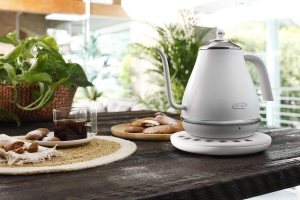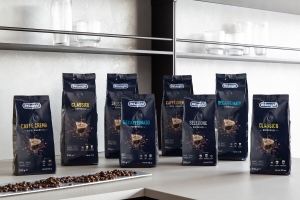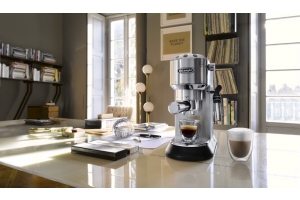sustainability
-
Posted: September 29, 2021Categories: Coffee 101
-
Posted: July 28, 2021Categories: Coffee 101
-
Posted: April 14, 2021Categories: Coffee 101
-
Posted: August 12, 2020Categories: The BeanRead more »
The word “organic” has taken over the world by storm with most grocery stores offering organic versions of your favourite food, and the same goes with organic coffee. What’s the difference between organic and regular coffee? Does it taste different and is the heftier price tag worth it? We find out.
What makes coffee organic?
[caption id="attachment_8812" align="alignnone" width="2560"] For coffee to be certified organic, it must be produced under strict conditions and guidelines. Photo from Miryam León.[/caption] Coffee is one of the most widely produced and traded commodities in the world, and meeting that demand isn’t an easy task. As coffee consumption increased globally, farming methods evolved to maximise production, even if it was at the expense of human health and the environment. But over the years, things have changed as the consequences of chemical farming surfaced. Today, organic coffee is more prominent than ever, and obtaining an organic certification isn’t as simple as we think. The first step is ensuring that the coffee farm abstains from using any form of chemical pesticides, herbicides, inorganic fertilisers or additives. Then, the coffee processing plant that handles the coffee before it is packaged must have its own organic system. This includes the exporter, importer, and coffee roaster. Essentially, each player of the supply chain has to be certified organic.
For coffee to be certified organic, it must be produced under strict conditions and guidelines. Photo from Miryam León.[/caption] Coffee is one of the most widely produced and traded commodities in the world, and meeting that demand isn’t an easy task. As coffee consumption increased globally, farming methods evolved to maximise production, even if it was at the expense of human health and the environment. But over the years, things have changed as the consequences of chemical farming surfaced. Today, organic coffee is more prominent than ever, and obtaining an organic certification isn’t as simple as we think. The first step is ensuring that the coffee farm abstains from using any form of chemical pesticides, herbicides, inorganic fertilisers or additives. Then, the coffee processing plant that handles the coffee before it is packaged must have its own organic system. This includes the exporter, importer, and coffee roaster. Essentially, each player of the supply chain has to be certified organic. Is there a difference in taste?
For most coffee drinkers, taste is the most important factor in deciding whether a cup of coffee is good. Here’s a surprising fact: an organic certification has little to no correlation with the taste qu -
Posted: July 29, 2020Categories: The BeanRead more »
Vietnam, more widely known for its strong and flavourful local coffee, is the world’s second-largest producer of coffee and top producer of the Robusta bean. The Southeast Asian country’s hilly landscapes and cooler climate make it the perfect location for coffee plantations. The next time you travel to Vietnam, walk down the streets of Hanoi or Ho Chi Minh and be welcomed by the aroma of freshly roasted coffee beans.
The Beginnings
In 1857, the French introduced coffee to the locals and soon after, the country was filled with coffee plantations as it was a lucrative industry that boosted the economy. When the Vietnam war came along, locals migrated, leaving behind their plantations. It was not until 1986 when private enterprises were given licenses to resume coffee production.How It Became a Coffee Production Giant
[caption id="attachment_8610" align="alignnone" width="2560"] Drinking coffee in London? The beans might be from Vietnam as it exports coffee beans all over the world. Photo from Christian Battaglia.[/caption] Coffee farmers initially relied heavily on the use of chemical fertilisers and pesticides to increase yields. However, with more worldwide regulations set in place, most farmers are now moving towards organic practices, producing more sustainable coffee. Learn more about this coffee roaster in Malaysia tha
Drinking coffee in London? The beans might be from Vietnam as it exports coffee beans all over the world. Photo from Christian Battaglia.[/caption] Coffee farmers initially relied heavily on the use of chemical fertilisers and pesticides to increase yields. However, with more worldwide regulations set in place, most farmers are now moving towards organic practices, producing more sustainable coffee. Learn more about this coffee roaster in Malaysia tha
-
Posted: April 30, 2019Categories: The BeanRead more »
A product of Kenya’s once lush and elusive coffee farms elevated 2000m above sea level, the Kenyan coffee is often lauded as one of the best coffees in the world. The bean is loved for its distinctive taste that gives off wafts of fresh, floral aroma and its notes of bergamot, berries and lemongrass upon tasting. Why then, with its quality and complex flavour, is the elusive Kenyan coffee not more popular or known?
Kenyan Coffee: Origins
[caption id="attachment_6903" align="alignnone" width="2000"] Kenyan Coffee, while medium-bodied, lingers on the palate with its juicy and rich flavour. Photo from Louis Hansel[/caption] The Kenyan Coffee originates from the red volcanic soil on plateaus to the north and east of Nairobi. Mainly a crop grown by smaller farms and cooperatives as well as within the confines of larger estates, it yields only 2 million bags a year. In comparison to its 50 - 500 trees, a common South American coffee farm boasts 5,000 - 10,000 trees. The best Kenyan coffee can be found within their very own local coffee roasters, who roast the beans fresh daily. More commonly, however, brands such as Starbucks and Amazon offer pre-roasted packs in stores and online. However, after roasting, the flavour diminishes the longer it is stored and when tasted, simply does not do it justice to the bean’s potential.
Kenyan Coffee, while medium-bodied, lingers on the palate with its juicy and rich flavour. Photo from Louis Hansel[/caption] The Kenyan Coffee originates from the red volcanic soil on plateaus to the north and east of Nairobi. Mainly a crop grown by smaller farms and cooperatives as well as within the confines of larger estates, it yields only 2 million bags a year. In comparison to its 50 - 500 trees, a common South American coffee farm boasts 5,000 - 10,000 trees. The best Kenyan coffee can be found within their very own local coffee roasters, who roast the beans fresh daily. More commonly, however, brands such as Starbucks and Amazon offer pre-roasted packs in stores and online. However, after roasting, the flavour diminishes the longer it is stored and when tasted, simply does not do it justice to the bean’s potential. Poor Marketing
To examine why the Kenyan coffee goes unappreciated, it boils down to bad, if not a lack thereof, marketing. Instead of marketing to the global audience, the coffee undergoes a cooperative system of marketing. Auctions are held each Tuesday of the harvesting season and buyers engage in intense price wars. On top of all tha -
Posted: November 07, 2018Categories: The BeanRead more »
In the Philippines, coffee is the most consumed beverage after water. A 2015 study by research firm Kantar Worldpanel found that coffee is a staple drink for Filipinos, who have shifted from being moderate to heavy coffee drinkers. This probably isn’t a surprise for those in metro Manila and other urbanised areas, which are chock-full of coffee houses ranging from big chains to boutique cafes. But the country’s coffee culture has surprisingly old roots, and some aspects of it – including the elusive and endangered form of Liberia, kapeng barako – are not well known.
Kapeng Barako: Origins
A coffee varietal that belongs to the species Coffea liberica, kapeng barako is grown in the Philippines, predominantly in the provinces of Batangas and Cavite. The term barako refers to Philippine liberica. The liberica is one of four identified species of coffee, along with robusta, excelsa and arabica. Of these, liberica has the biggest cherries and therefore, produces bigger beans. The story of barako in the Philippines dates back 200 years, when it was first planted in a place called Lipa City in Batangas. Coffee had only recently been introduced to the country by a Franciscan friar but it quickly grew into a thriving industry. Subsequently, the Philippines became a key coffee producer. In the Philippines, “barako” is a name g













